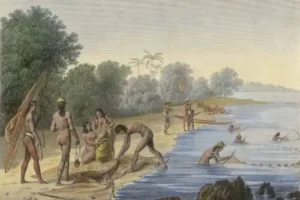
Pumeska: Hunters on Land and Sea
Ancient Chamorro/CHamorus were avid hunters both on land and sea. They developed many methods of eguihan (fishing), ranging from etupak (line fishing), lagua’ (net fishing),

Ancient Chamorro/CHamorus were avid hunters both on land and sea. They developed many methods of eguihan (fishing), ranging from etupak (line fishing), lagua’ (net fishing),
Although death is an occasion for grief, the CHamorus consider it as a chance for the extended family throughout the island to gather and pray
Slingstones were used as weapons by ancient CHamoru warriors. Slingstones are stones of various sizes sharpened at both ends and hurled from a sling with
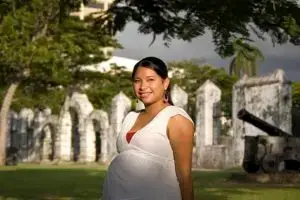
Prebirth Åntes di finañågu The pattera (nurse midwife) and suruhånu (traditional doctor) played important roles in the CHamoru/Chamorro society, especially when it came to pre-birth-to-birth
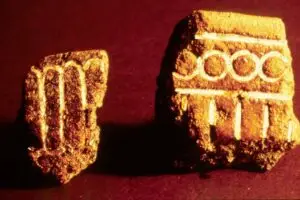
The Mariana Islands has a history of pottery-making that is more than 3,500 years long. The first people to arrive in the Mariana Islands apparently

The birth of a child is the most important family event in CHamoru society. It marks the beginning of family celebrations and obligations that define
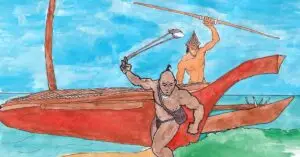
The signature weapon of the ancient Chamorro/CHamoru warrior, slingstones of various sizes were sharpened at both ends and hurled from a sling with deadly force
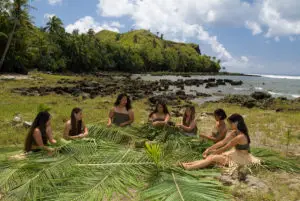
The coconut, called niyok in Chamorro/CHamoru and cocos nucifera scientifically, is undoubtedly one of the most important native plant foods in the Mariana Islands. Chief
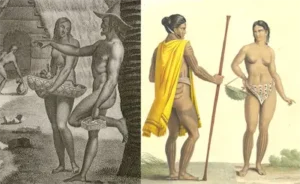
Interpretive essay: No evidence of CHamoru tattoo from ancient times. Tattoo is often thought to have been a universal cultural practice in the Pacific islands.
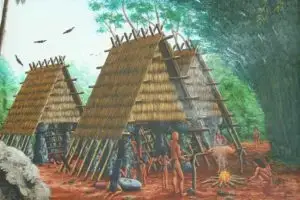
The latte is a manmade construct carved from limestone or basalt that was used as a foundation for a shelter against the elements or as